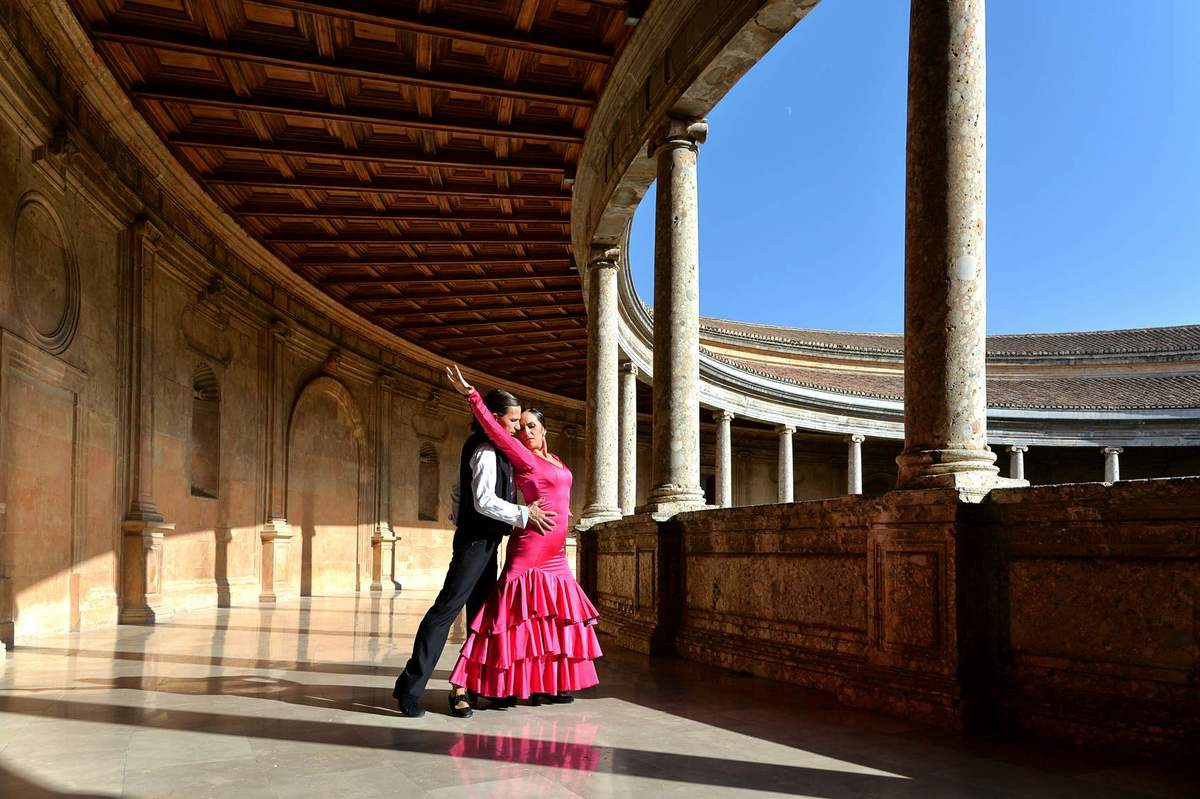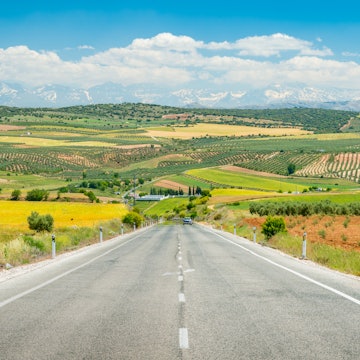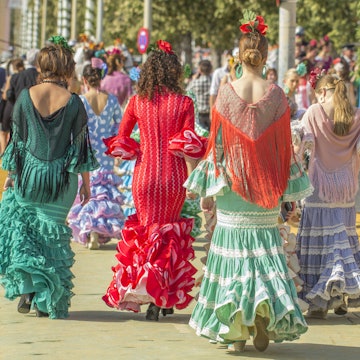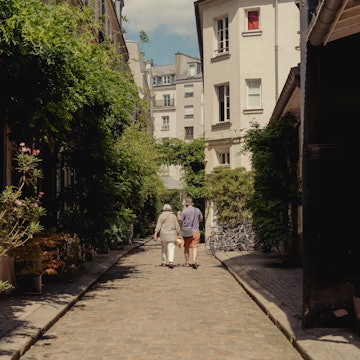

The spectacular ancient Roman amphitheater dates back to the 2nd century and was once a stage for gladiators. Shutterstock
Located along the Mediterranean Costa Daurada, or "Golden Coast", Tarragona is a sun-drenched city with Roman ruins and seaside charm. As the former capital of Roman Hispania Citerior and later Hispania Tarraconensis, Tarragona retains a striking sense of antiquity – from crumbling amphitheaters by the sea to colossal aqueducts just outside the city. But Tarragona isn’t stuck in history. Its golden beaches and laid-back plazas make it a fantastic coastal getaway with just the right amount of edge. And the best part? The relatively quiet Tarragona is only an hour’s train ride from the bustling Barcelona.
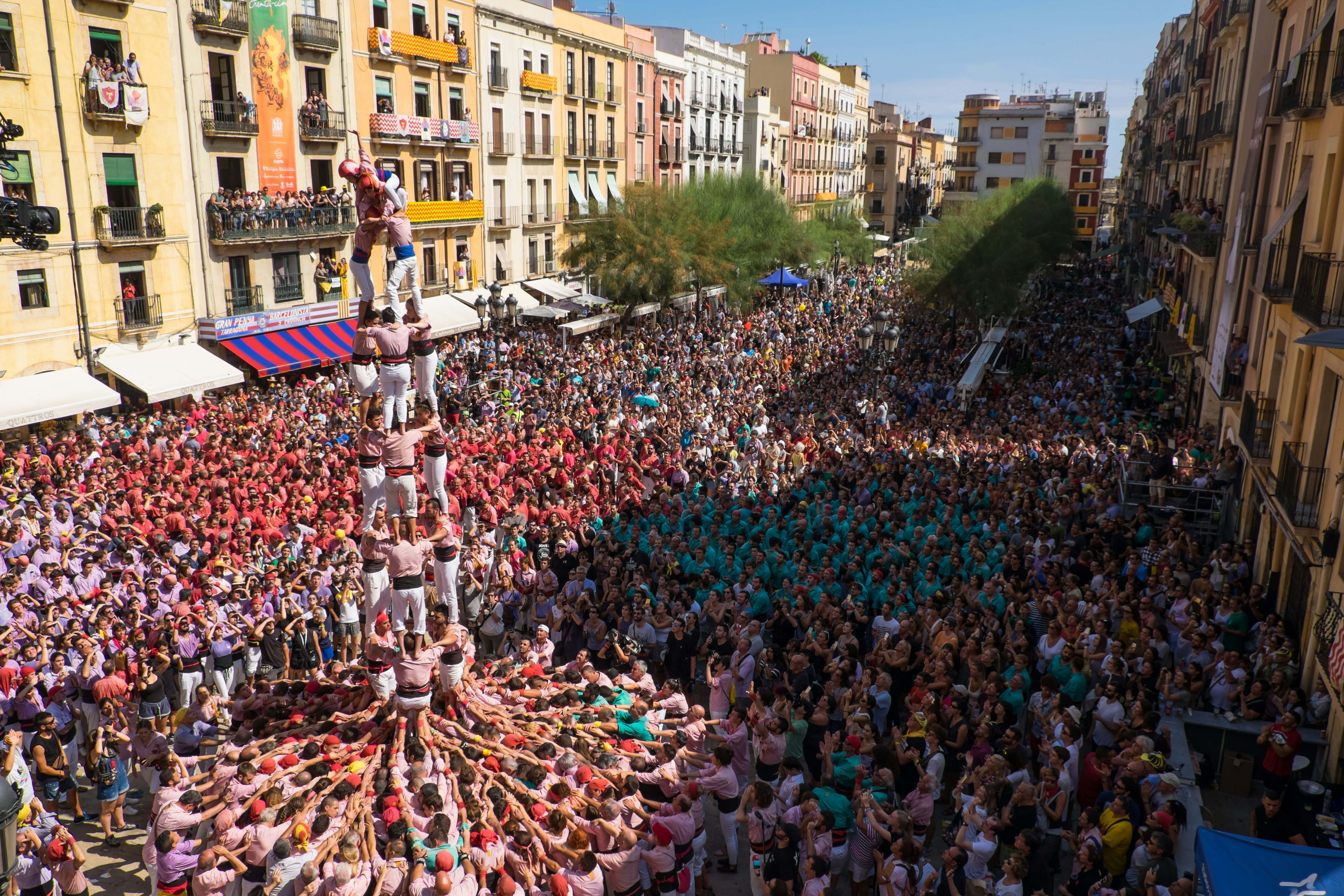
When should I go to Tarragona?
Spring (March to May) is a great time to visit Tarragona, as the temperature remains pleasantly between 18°C and 24°C (64–75°F). Fewer tourists make it an ideal time for exploring the city's Roman ruins and strolling along the seaside promenades. Book-lovers should head to Tarragona in April, when the city celebrates Sant Jordi (St. George, the patron saint of Catalonia). The day is also known as the Day of Books and Roses, and the streets are filled with books, roses and local festivities.
In summer, temperatures can climb to around 35°C (95°F). Midday hours are perfect to while away at a beach or enjoying a siesta, while evenings offer lively terraces.
Autumn is perhaps Tarragona’s most atmospheric season, especially in late September during the Santa Tecla Festival, a colorful celebration of Catalan culture with parades and castellers (human towers). Winter (December to February) is quieter, making it a good opportunity to delve into the city’s Roman heritage.
How much time should I spend in Tarragona?
A two-day trip will showcase Tarragona’s main sights, including the Roman ruins, the Catedral de Tarragona and the Old Town. And you will still have time to enjoy one or two beaches and sample Tarragona’s culinary offerings, from tapas to the local restaurants in the market hall. However, if you extend your stay by a day or two, you’ll have more time to take in the beautiful architectural details in the Old Town and visit the 27-meter-tall Aqüeducte de les Ferreres, located 3.6 kilometers out of the city center.
Is it easy to get in and around Tarragona?
Reus Airport is located 7 kilometers outside Tarragona. A taxi to Tarragona costs around €33/$39 and takes about 15 minutes. Or take the bus L50 from the airport to Reus city’s train station, Renfe. From here, trains depart to Tarragona at least once an hour till after 9 pm. The journey takes 20 minutes and prices start from €2.95/$3.50. From Barcelona, frequent regional trains run to Tarragona in just over one hour: this is the best way to enter the city as the train will glide past the amphitheater as well as dozens of beaches and coves.
Tarragona itself is relatively easy to navigate on foot, although there are some climbs, especially in the Old Town and the coastal roads leading to the beaches. Most of the city's main sights are all within walking distance of each other.
Top things to do in Tarragona
From the striking seaside amphitheater to the ancient Roman remnants in the Old Town, Tarragona offers a beautiful setting for a deep dive into its imperial past. Add golden beaches and the relaxed Catalan way of life, and you’ve got a destination that draws you back time and time again.
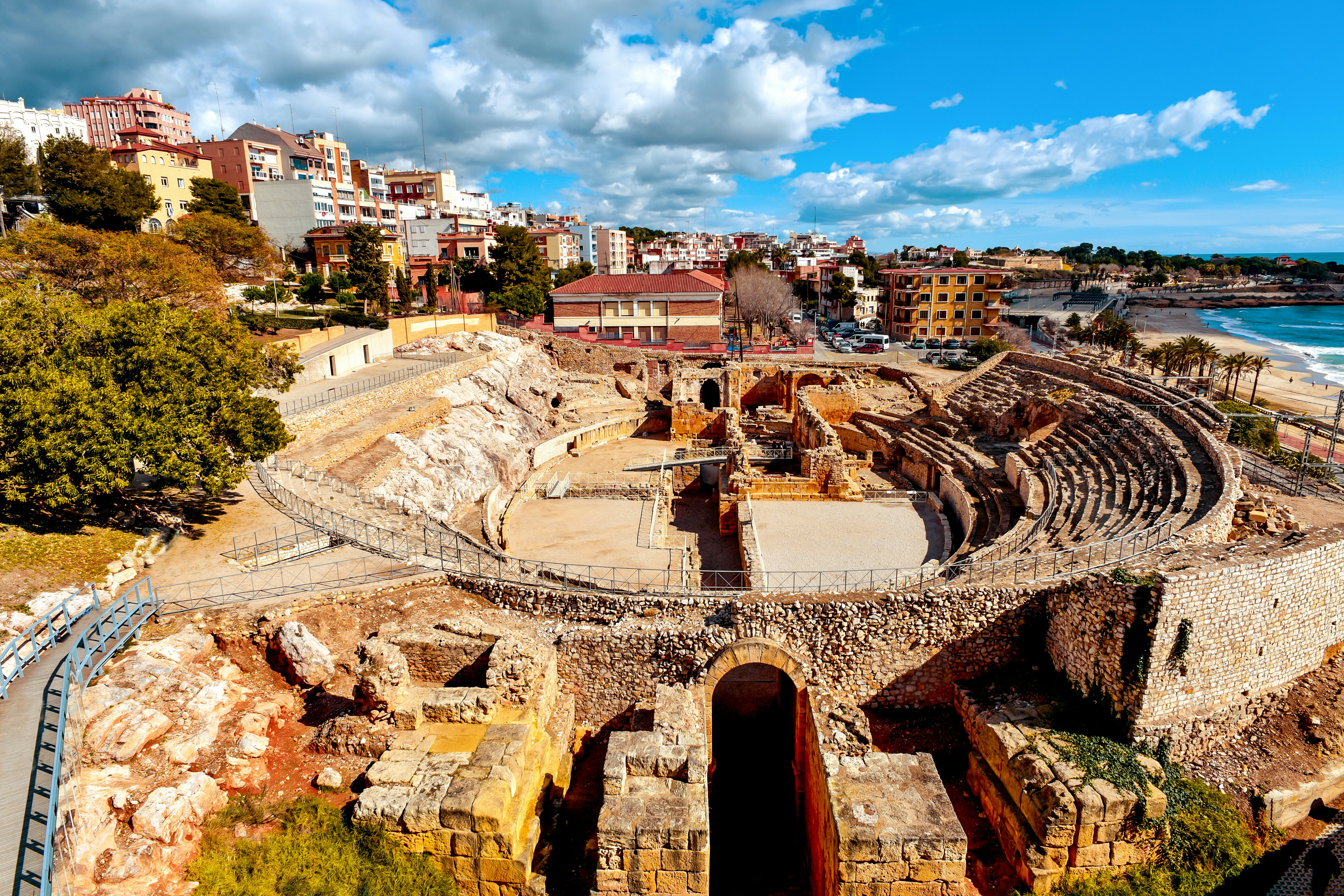
Wonder at the ancient Roman city by the sea
Tarragona’s Roman legacy is impossible to miss: if you arrive by train from Barcelona, you are greeted by the magnificent Amfiteatre Romà rising by the seaside just as the train reaches Tarragona. The amphitheater dates back to the 2nd century and was once a stage for brutal gladiator contests. Ruins of a Romanesque church dating from the 12th century and a 6th-century Visigoth basilica are also still visible here. Both were built to commemorate Saint Fructuosus and two deacons, believed to have been burnt alive in the arena in CE 259. A visit to the partly reconstructed amphitheater is €5/$5.84.
Another marvellous Roman-era sight is the city’s ancient walls, which were built to defend the Roman Tarraco. The inner walls were built between the end of the 3rd century and the beginning of the 2nd century BC, whereas the outer defence was built by the British in 1709 during the War of the Spanish Succession. The wall was originally some 3.5 kilometers long, yet today, approximately 1100 meters remain. Walking along the pretty Passeig Arqueològic, or Archaeological Promenade, along the wall highlights historical features but also makes a beautiful setting for a romantic stroll (entrance €5/$5.84).
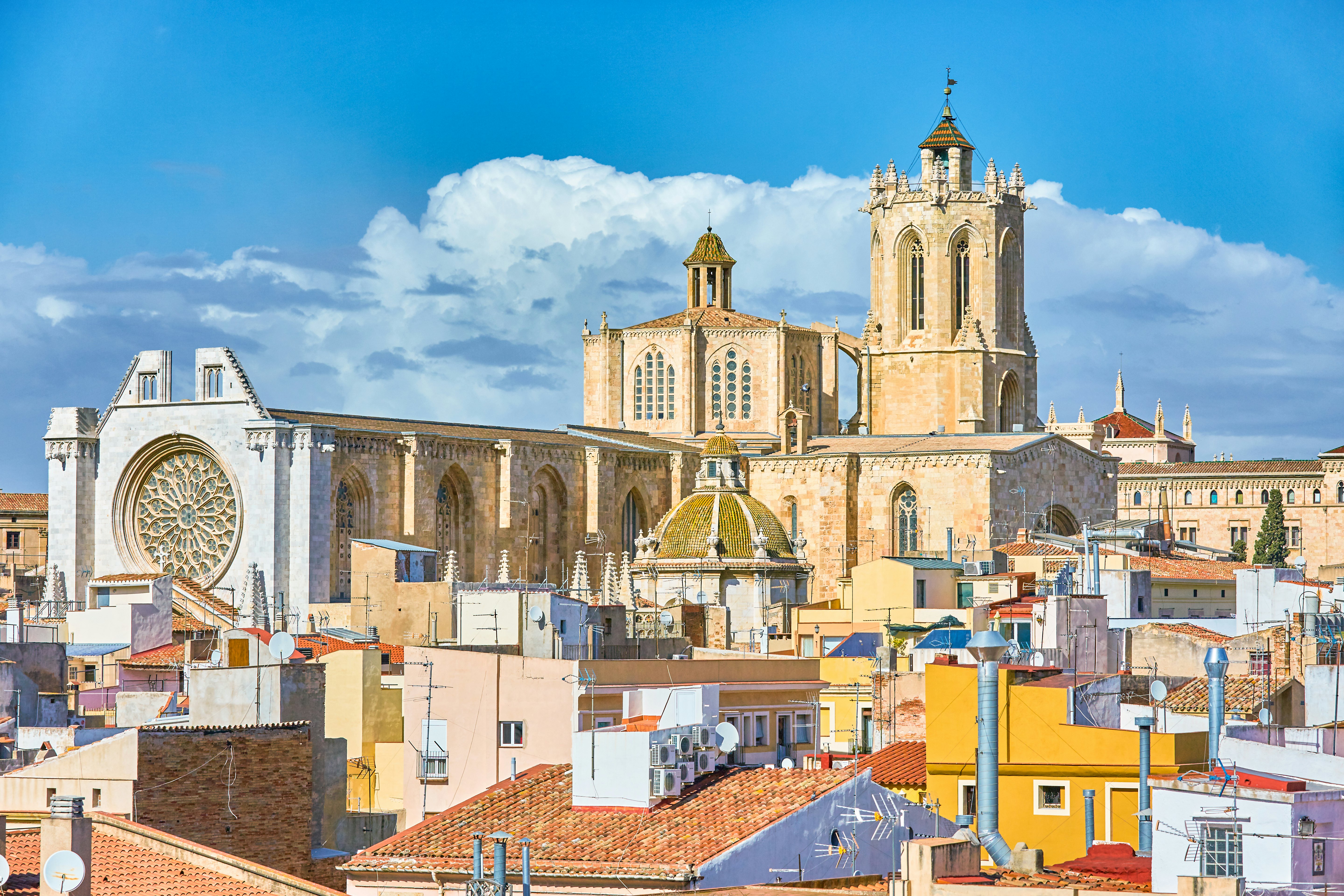
Wander around the Old Town
The ancient Roman wall partly lines Tarragona’s Part Alta (Old Town), a network of narrow lanes, medieval stone houses and little courtyards, built directly atop or next to ancient Roman foundations. The city’s Roman heritage is unmissable here, with the remnants such as the Roman Circus, Circ Romà, where chariot races were once held. This circus is one of the best conserved in the Western world and could accommodate 30 000 specators. Adding to its allure is the fact that much of the structure is hidden under 19th-century buildings. Today, the eastern side can be visited (€5/$5.84), and several vaults can be seen along Carrer Trinquet Vell and in Plaça de la Font.
Rising above the layers of history is the Roman and Gothic Tarragona Cathedral (entrance €12/$14), which was built on top of the Roman temple of Augustus. But strolling in the Old Town is not just about history: you’ll find plenty of little cafés, bars and restaurants, perfect for lingering over a cold drink or a tasty meal.
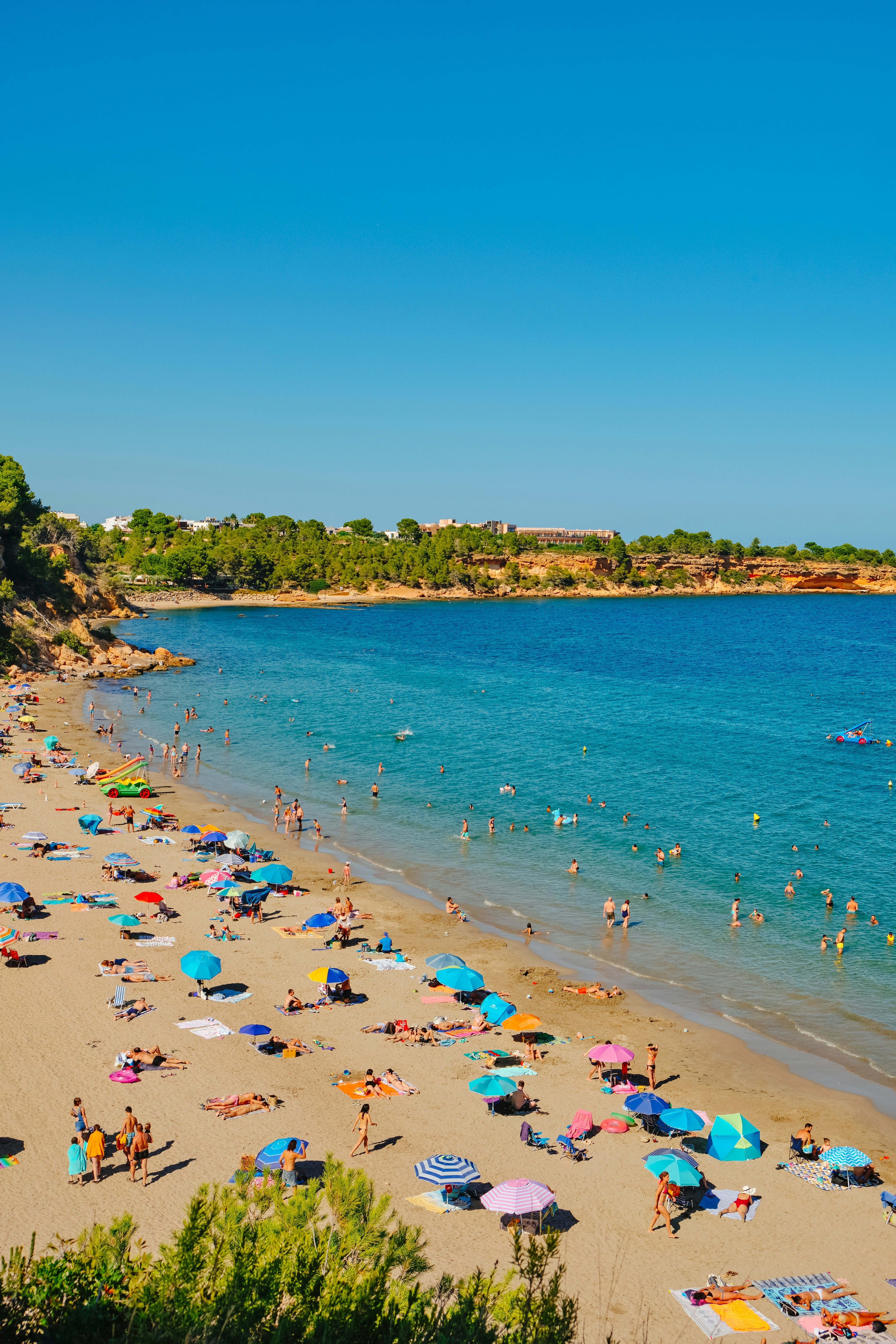
Best beaches
Costa Daurada, the Golden Coast, stretches for about 150 kilometers south of Barcelona, and Tarragona is its main city. Tarragona itself has fifteen kilometers of coastline and its beaches are famed for their fine, golden sand. The water is pleasant for swimming, especially from June to September, but the beaches make a scenic day out year-round. Located next to the amphitheater, Platja del Miracle is easily accessible from the Old Town and can get crowded. Two kilometers north of the amphitheater, Platja Arrabassada is a smaller and more secluded paradise-like beach. Most beaches in and around Tarragona offer amenities such as showers, loungers, umbrellas and kiosks, but smaller beaches and coves tend to be unserviced – check before you go.

See the Devil’s aqueduct
Just beyond the city, the well-preserved Unesco World Heritage Site Aqüeducte de les Ferreres rises above a pine-filled ravine, a striking reminder of Rome’s engineering prowess. Located 3.6 kilometers from the city center, it’s just over a five-minute drive away. Alternatively, bus lines 5 and 85 take you near the site (bus stop is Pont del Diable, Devil’s Bridge) in about 15 minutes, followed by a short uphill walk. The aqueduct rises to 26 meters and is part of one of two water systems built here in the first century. The bridge was constructed without mortar by stacking large ashlar stones – a technique so impressive that, according to a local legend, it must have been built by the Devil himself.
My favorite thing to do in Tarragona
My perfect Tarragona moment? Heading to the old fisherman’s quarter El Serrallo and grabbing a table at one of the seafood restaurants, where fresh catch is served with a view of the harbor. Afterwards, I like to stroll along Tarragona’s shopping street, La Rambla, up to the Balcó del Mediterrani, the city’s cliffside promenade. Locals come here to toque ferro (“touch iron”), referring to the promenade’s iron railing. And no wonder, as from here, you get sweeping views of the sea, the Roman amphitheater below, and ships twinkling in the dusk. It’s a simple and unforgettable joy.
How much money do I need for Tarragona?
Compared to its northern neighbor, Barcelona, Tarragona offers a more budget-friendly getaway. In the off-season, you can book a hotel in the city center for around €60/$70. Standard rate is between €80–100/ $93-117 for a double room per night, and even more high-end hotels tend to stay under €150/$175. Eating out won’t break the bank either, as you can find economical eateries offering a three-course lunch, menú del día, for around €10/$12.
Hotel room off-season: from €85/$100
Cup of coffee by the market square: €1.70/$2
Cortado in a restaurant: €1.50/$1.75
One tapa in a bar: €2–7/$3-8
3-course menú del día (lunch) in a tavern: €10–15/$12-17.50
Lunch for two with sangria in the market hall: €23/$27
Fish or meat main course in a fine dining restaurant: €19–34/$22-40
Beer/pint at a bar: €2–5.50/$2.30-6.50
Sun lounger/umbrella for the day at a beach: from €5-10/ $6-12
Taxi from the train station to the old town: around €9/$10.5
Things you should know in Tarragona
A limited number of hotels
In recent years, Tarragona has become a popular getaway – and even a new home – for many from Barcelona, thanks to its relaxed pace and more affordable cost of living. It’s also growing as a tourist destination. While there’s a decent range of hotels, availability can be limited, especially in July, August and during festivities, so book early.
Clothing-optional beaches
Tarragona’s city center beaches, such as Platja del Miracle, are family-friendly, but many smaller beaches and coves, especially further away from the city, have nudist areas. In Playa de la Savinosa, clothing is optional, and the secluded Cala Fonda (also known as the Waikiki Beach) is popular with nudists.






